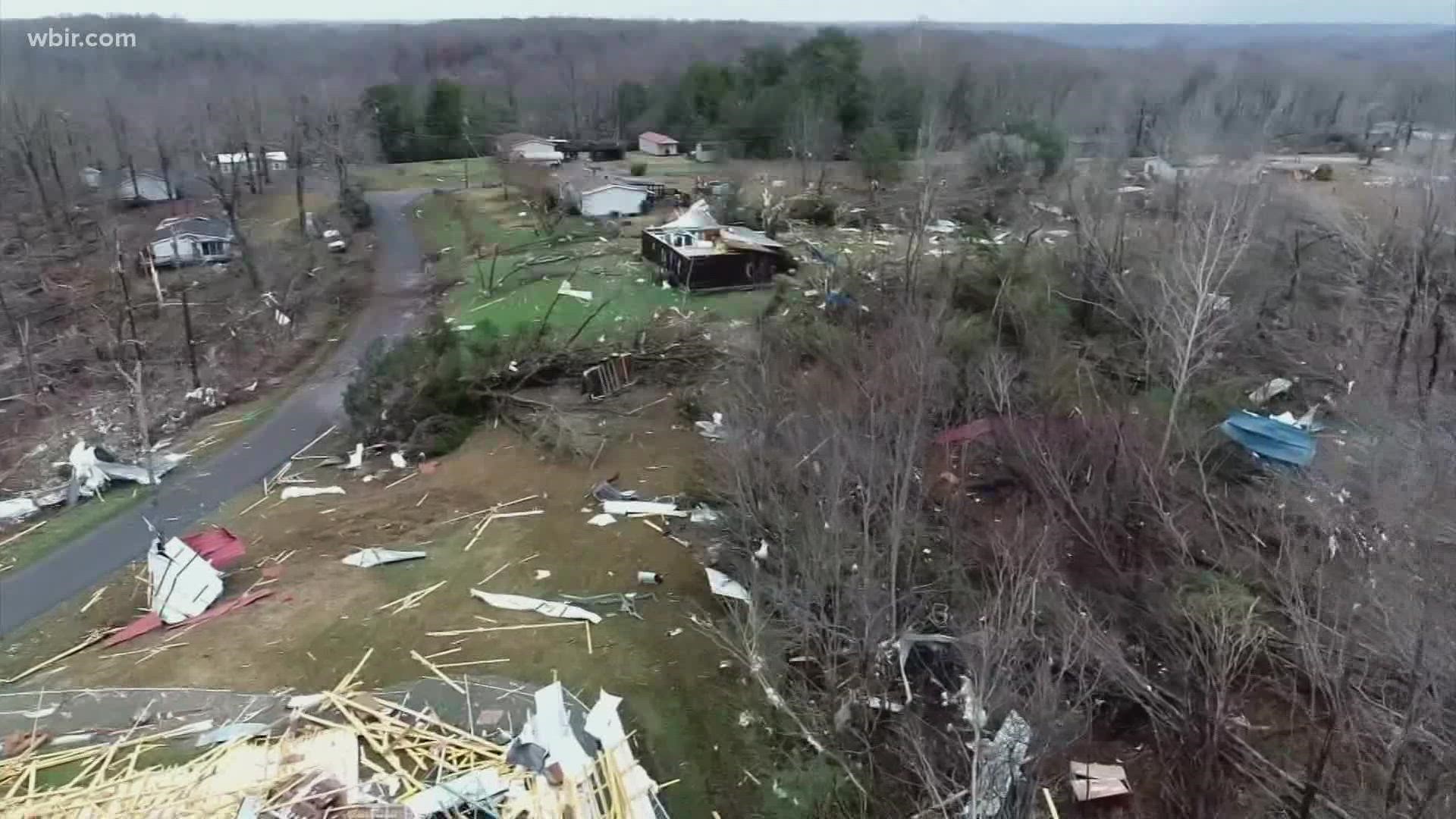KNOXVILLE, Tenn. — A week after deadly tornadoes killed nearly 100 people across multiple states, a University of Tennessee hazard climatologist warned the Southeast should prepare for more devastating storm outbreaks, likely as a result of climate change.
Kelsey Ellis said scientists are tracking fewer tornadoes in the Great Plains — and more in the Southeast, including Middle and West Tennessee.
"So we’re going to see a shift of more fall tornadoes and also more happening at night because that’s what happens in the Southeast," she said. "They also move faster and stay on the ground longer and so overall you can expect more destruction from it."
She explained that warming at the North and South Pole changes the jet stream across the Continental U.S., which in turn changes the weather pattern.
"We aren't sure whether we can attribute it to climate change, but it sure seems like we probably can. There's no natural variability that can explain it," Ellis said.
While the technology to detect tornadoes using radar has improved dramatically in recent years, she said the number of days with conditions favorable to tornadic development has also increased across the South, which helps climatologists when they track the changing weather pattern.
The number of tornadoes hasn't changed, Ellis said, but where they're happening and where they're likely to happen has shifted. She said they're also occurring in clusters more often.
"It’s kind of more of an all-or -othing type thing. We’re also seeing that with rainfall, for example. We’re seeing more droughts and floods and less medium-type rainfall. We’re seeing the same thing with tornadoes. Fewer one tornado days and more outbreak days," Ellis said.
As the likelihood of tornadoes increases across the South, Ellis warned of more devastation too.
"We’re a more vulnerable population so you can expect that these tornadoes as they shift to the Southeast to be more disastrous," she said.
People in the Southeast are less likely to live in homes that are built to withstand tornadoes and less likely to be prepared to rebuild.
"We’re seeing a lot of urban sprawl and that just causes a bigger bullseye for the tornado to hit and that just causes more devastation," she added.
The tornadoes in the South, she explained, more often develop within lines of fast-moving, strong thunderstorms. That can shroud the tornadoes in clouds of rain, making them hard for people to spot.
Ellis said policymakers need to prepare for the shifting pattern by enhancing worker protections in case of bad storms and improving building codes. People can prepare, she said, by identifying safe spaces to take shelter in their homes if a storm comes their way.

